


Masti-farm bolus
NATURAL METHOD TO REDUCE THE BACTERIA AND SOMATIC CELLS
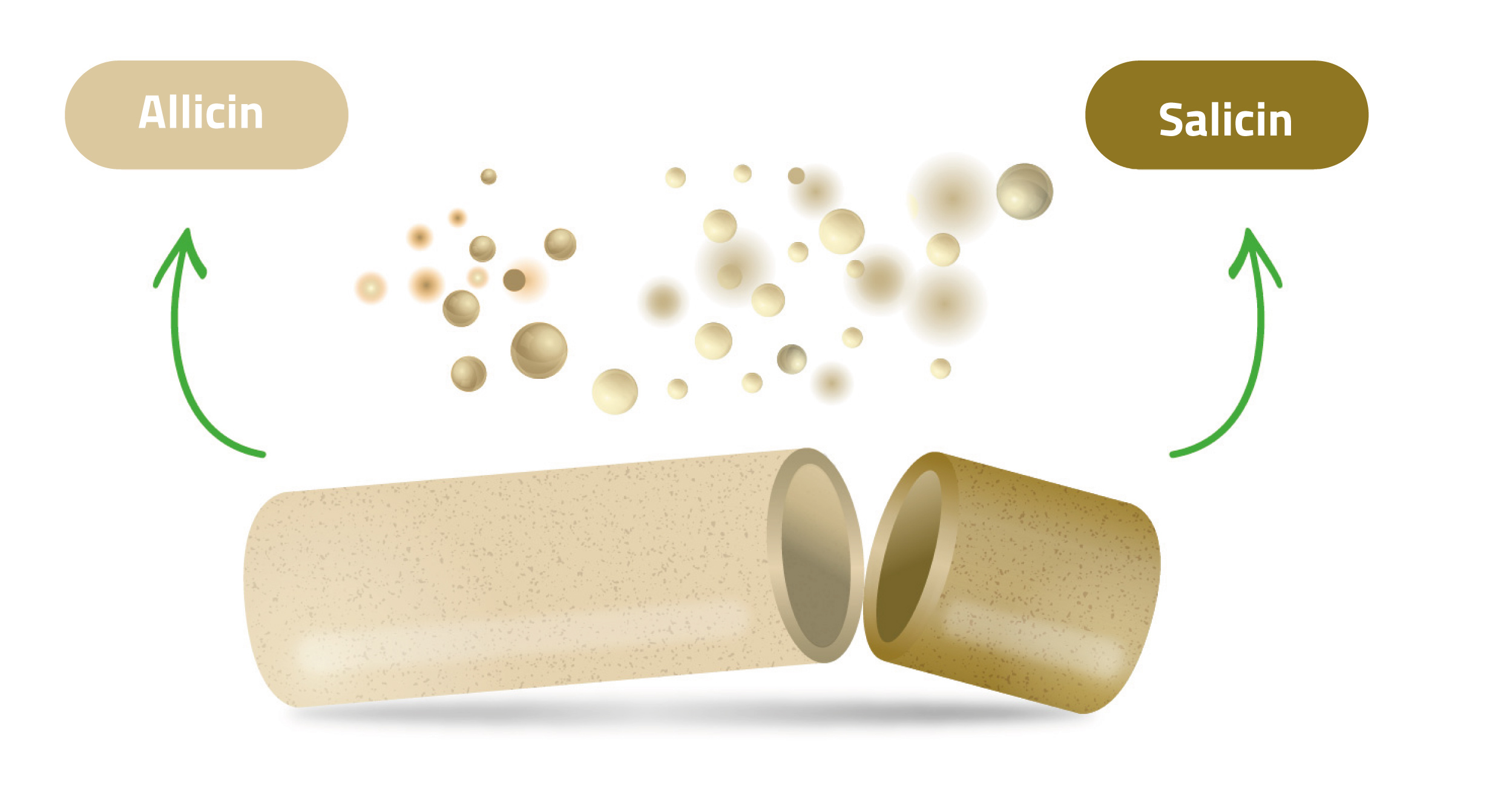
BOLUS TECHNOLOGY
Two parts bolus, 100% of the ingredients are digestible.
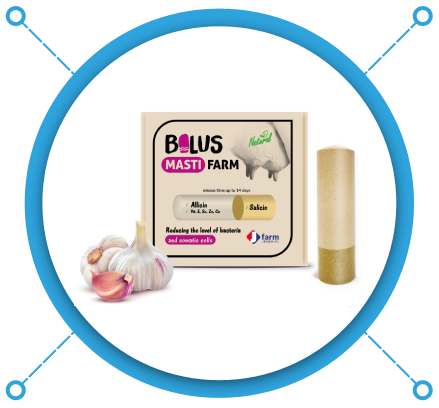
PHYSICAL PROPERTIES
Weight 165 g,
height 120 mm,
Ø 33 mm.
CHEMICAL PROPERTIES
Allicin, salicin, trace elements and vitamins
PACKAGING
Each bolus secured in plastic tube. Four boluses in one box.

An increase in the number of SCC cells > 200,000/ml of milk is an ALARM condition that may indicate a subclinical inflammation of the udder, which causes a decrease in milk yield, depending on age and lactation, from 150 – 400 liters of milk per year.
Increased levels of SCC cells in milk, in addition to a decrease in milk yield, changes in the biochemical composition of milk are progressing. Deterioration of milk quality and its usefulness in the technological process, e.g. cheese production
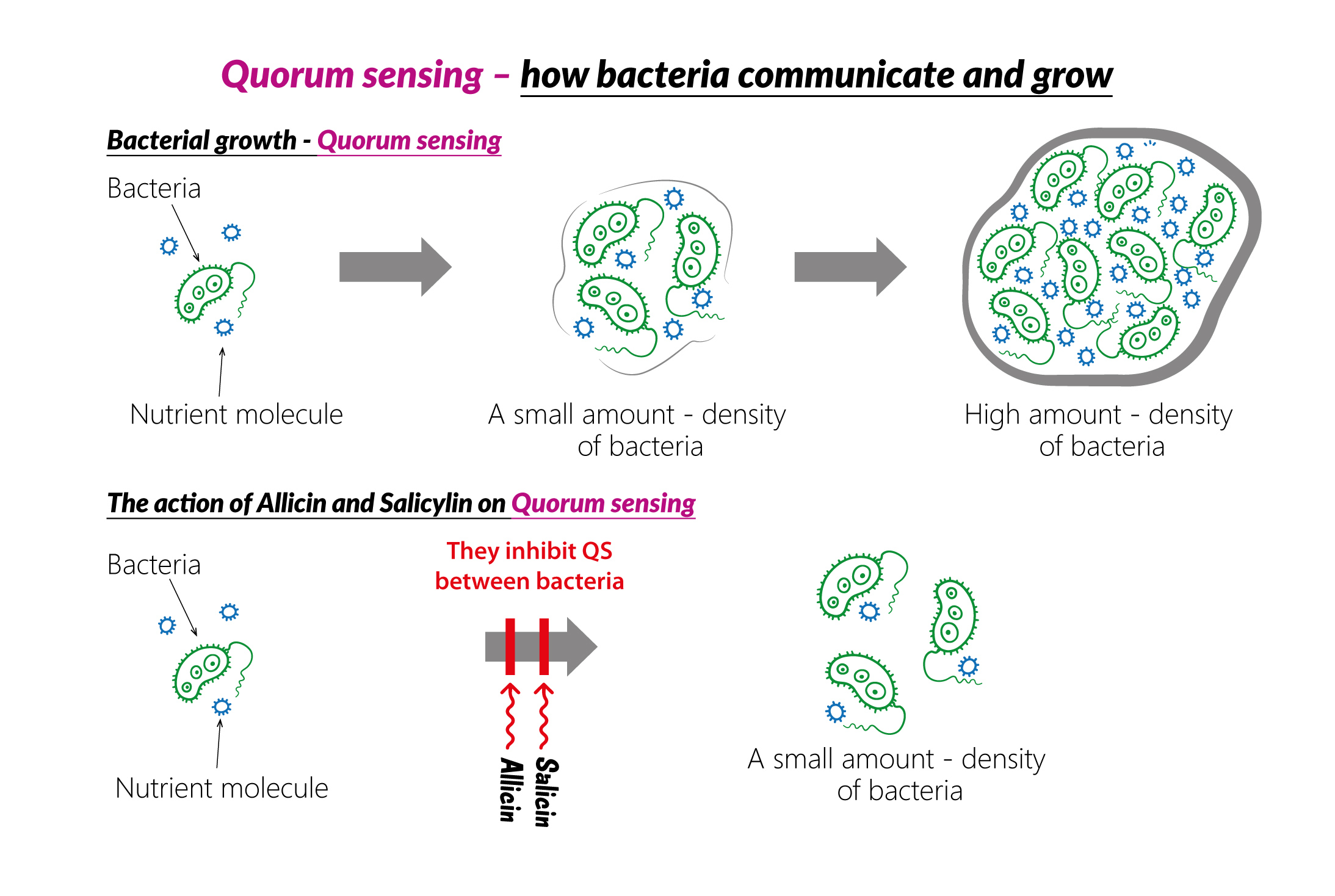
The mechanism of action of the allicin and salicylate contained in the bolus on the disorder in the way of communication, nutrition and bacterial growth, and consequently the development of further bacterial colonies.
Subclinical mastitis is a big breeding and economic problem in dairy farms, due to the decrease in
milk production, the increase in treatment costs, and the costs of culling cows from the herd.
– Antibiotics can be used in acute inflammatory conditions of udder diseases.
MASTI FARM Bolus – an alternative, natural method to reduce the level of bacteria and somatic cells in milk.
Healthier udder = more milk
Bolus contains garlic extract with the following properties:
- bactericidal,
- virucidal,
- anti-inflammatory
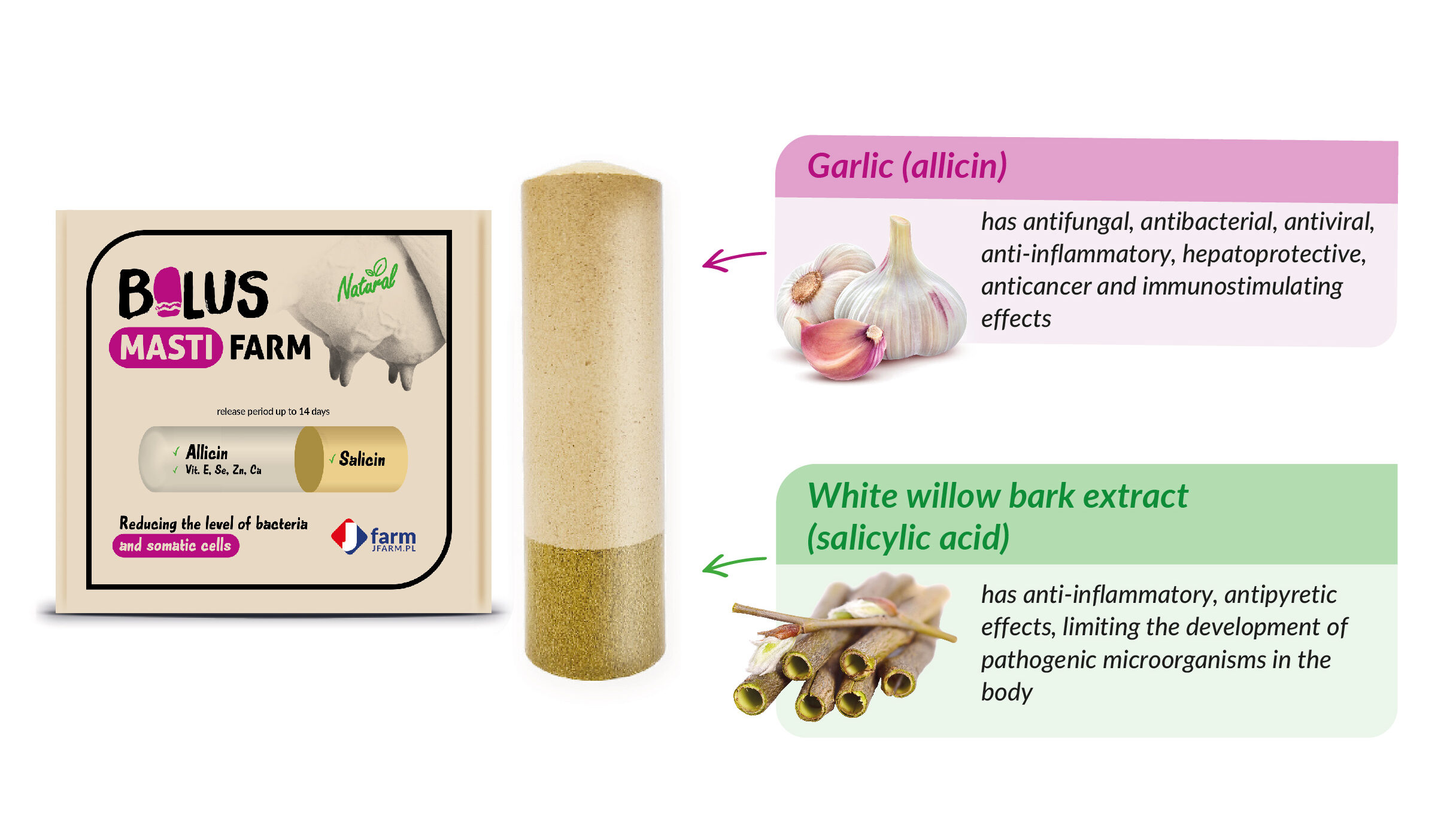
- Garlic, in addition to allicin, contains biologically active substances – niacin, vitamins including A, B, C, and microelements Mg, Fe, Zn, Cu, which have a positive effect on the health status of the mammary gland.
- The white willow bark extract contained in the bolus contains a large amount of salicylic acid, which is classified as a non-steroidal anti-inflammatory drug, has an antipyretic effect, and limits the development of pathogenic microorganisms in the body.
- Vitamin E and selenium Se have antioxidant properties, while zinc Zn has a positive effect on reducing the number of somatic cells in milk, positively affecting the health status of the udder.
The effectiveness of Bolus MASTI-FARM confirmed by in vivo research!
The study was conducted in vivo under the supervision of Dr Marcin Gołębiewski, prof. SGGW, Department of Animal Breeding, SGGW in Warsaw. The experiment was conducted on cows characterized by a level of SCC <400 thousand/ml in the month preceding the start of the experiment and SCC >700 thousand/ml in the month of the beginning of the bolus administration. A single application of the bolus had a positive effect on the health of the udder of cows with fresh mastitis. The use of the bolus contributed to a reduction of SCC from 815 thousand/ml to 300 thousand/ml in the group of cows studied. In the case of subclinical inflammation with an increase in SCC from > 400,000 to a level of approximately >1-2 million, a single application of Masti Farm bolus in lactating cows may be a very good practical solution as an alternative to antibiotic therapy. At the same time, the bolus did not have a negative effect on the technological parameters of milk and the health of cows.
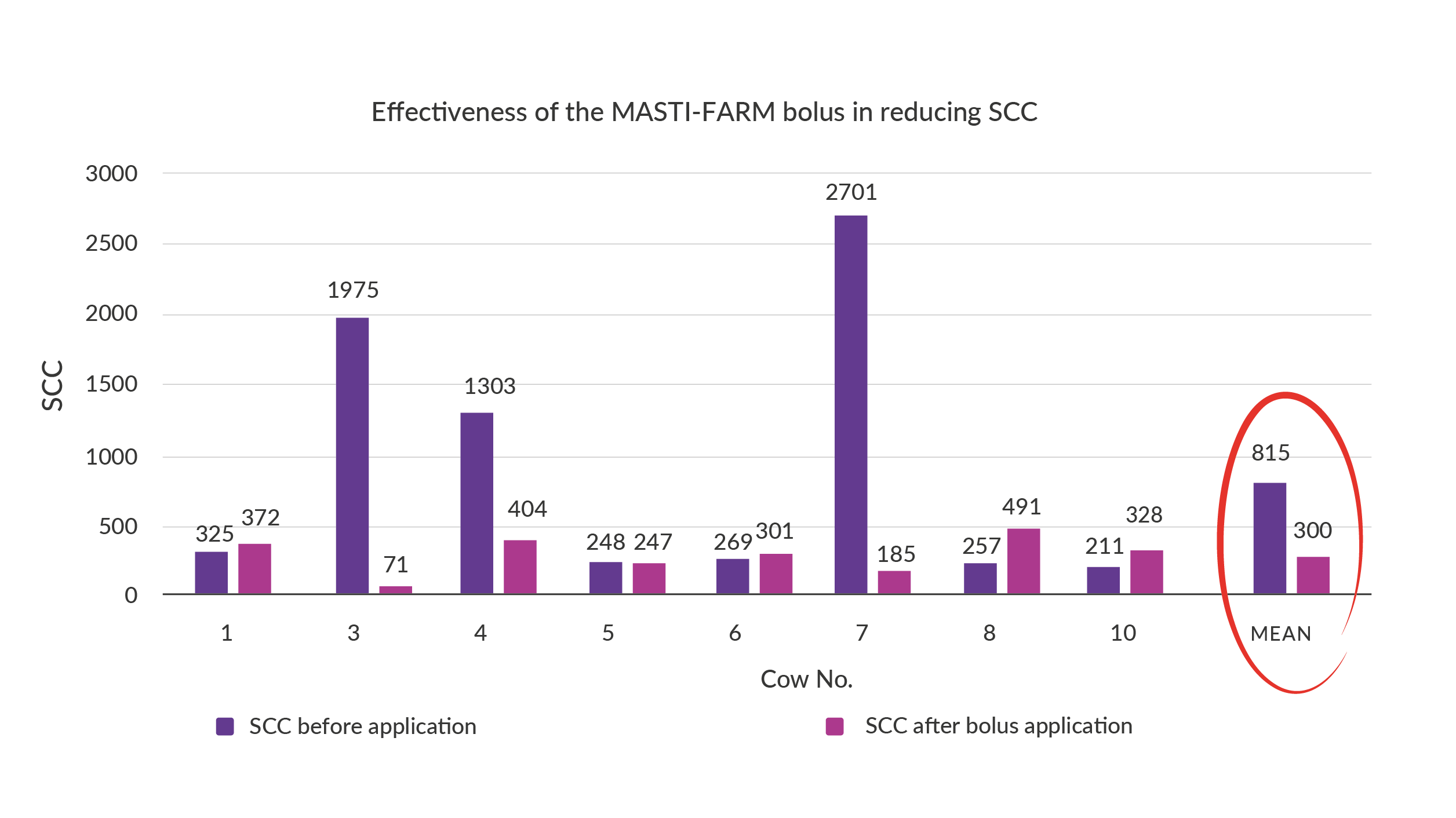
Masti Farm Bolus Practical use:
- During the dry period, to improve the immune status (elimination of inflammation – salicylic acid) and reduce the risk of Mastitis in the first weeks of lactation
- In lactation for cows that have an increased somatic cell count but there is no indication for antibiotic treatment yet (subclinical
mastitis) - In lactation for cows, which somatic cell count is unstable based on the history results
- During antibiotic treatment to shorten the treatment duration or immediately after antibiotic therapy to reduce the risk of re-infection and support immunity (antibiotics and previous infection weaken the body’s immunity).
